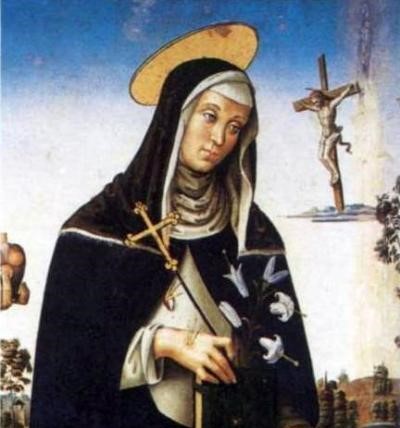
Saint of the Day for 18 January: St. Margaret of Hungary
St. Margaret of Hungary: Life, Legacy and Influence of the Princess Who Became a Saint
Name
St. Margaret of Hungary
Title
Princess and religious
Birth
Jan. 27, 1242, Dalmatia
Death
January 18, 1270, Domonkos kolostor
Recurrence
18 January
Martyrology
2004 edition
Beatification
1789, Rome, Pope Pius VI
Canonisation
1943, Rome, Pope Pius XII
Prayer
O glorious Margaret, young and holy, princess, who chose as your spouse the Lord your God, first fruits of those called to live from God in the world to enrich it with peace, justice and love to the dispossessed and excluded. The witness of your life remains as a light for Europe to follow the ways of the true good of every man and all men. Please impart to us from Christ, to whom you were conformed, intelligence, courage, industriousness and credibility, as true builders of God’s kingdom in the world. Amen
Roman Martyrology
In Budapest, Hungary, St. Margaret, Virgin, of the royal lineage of the Harpadians, nun of the Order of St. Doménicus, distinguished for the virtue of chastity and most rigorous penance, by Pius 12. Pontiff Maximus, inscribed in the catalog of holy Virgins.
The Saint and Mission
St. Margaret of Hungary is a figure who embodies the mission of devotion and service in an exemplary way. Her life, which developed from being a princess to a religious, is a powerful witness to her commitment to a path of humility and charity. Her choice to renounce the privileges of nobility to devote herself to monastic life reflects a deep inner call to simplicity and service to others. Margaret of Hungary showed unconditional love for the poor and the sick, serving with compassion and dedication, demonstrating that true nobility resides in the heart and in actions. His mission was not only to help those in need materially, but also to offer an example of deep spiritual life. Her unwavering faith and devotion inspired many, both in her time and in later generations. Margaret of Hungary teaches us that holiness is not distant or unattainable, but is something that can be lived every day through acts of love, humility and service. Her life is a reminder to recognize the value and dignity of every person, and to respond with generosity and mercy to the needs of our neighbor.
The Saint and Mercy
St. Margaret of Hungary is a shining embodiment of mercy, a living example of how compassion and love can transform lives. Born into a position of privilege, she chose a path of humility and dedication to others, embodying the true essence of Christian mercy. Her life was a continuous act of unconditional love, especially toward the most vulnerable and needy. Margaret showed an extraordinary ability to empathize with the sufferings of others, dedicating her existence to the loving service and care of the sick and poor. St. Margaret’s mercy was not limited to isolated acts of charity; it was a way of life that permeated her every act and word. With a deep understanding of humanity and a heart open to welcome, she offered consolation and hope to anyone she encountered. Her example teaches us that mercy is much more than a simple act of pity; it is a conscious choice to share love and goodness in every moment of life. The story of St. Margaret of Hungary continues to inspire, reminding us that mercy is one of the highest forms of human expression, a bridge that connects hearts and transforms the world into a more compassionate place.
Hagiography
Daughter of Hungary’s King Béla IV Margaret was born in 1242 in Dalmatia. The Mongol invasion commanded by Bathu, grandson of Genghis Khan, had been proliferating over her country for several months, and her parents found escape in the neighboring country. The mother was expecting an heir, so the parents made a vow: “If a child is born, they will entrust her to a convent for the liberation of their country.” The condition occurred, so the little girl at about age 3 was taken to the Dominican convent of St. Catherine in Veszprém. At the same time a new convent was built near Buda, especially for her, on a small island in the Danube that would later be called St. Margaret’s Island. At the age of twelve she consecrated herself totally to an ascetic religious life of Bible readings, prayers and divisions, dividing one of the great medieval mystics. Years passed, political exigencies changed and…
